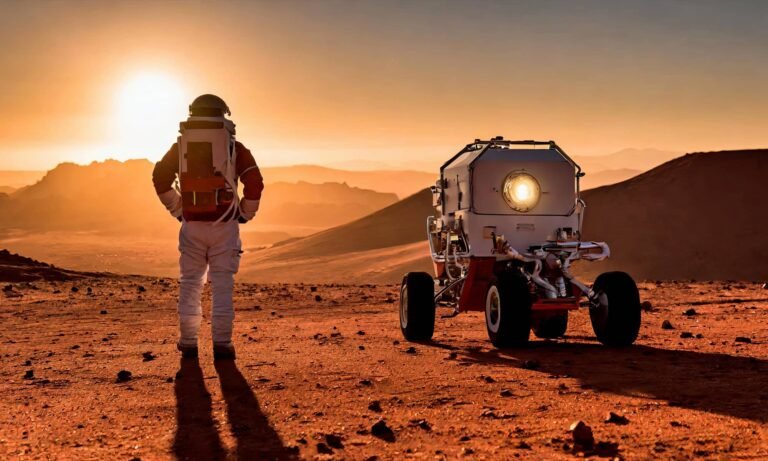Space Stations
A space station is a spacecraft which remains in orbit and hosts humans for extended periods of time. It therefore is an artificial satellite featuring habitation facilities. The purpose of maintaining a space station varies depending on the program.
The idea of new space stations is gaining momentum as both national space agencies and private companies look to extend humanity’s presence in low Earth orbit (LEO) and beyond. Here’s an overview of the current developments and future plans for new space stations:
Gateway (Lunar Orbital Platform-Gateway)
Overview
- Part of Artemis Program: The Gateway is a collaborative project led by NASA, with contributions from international partners like ESA, JAXA, and CSA, aimed at supporting lunar exploration and serving as a stepping stone for missions to Mars.
- Lunar Orbit: Unlike the ISS, the Gateway will orbit the Moon, providing a platform for astronauts to live and work in deep space.
Objectives
- Support lunar missions: Serve as a staging point for crewed missions to the lunar surface.
- Deep space operations: Test technologies and conduct research in a deep-space environment.
- International collaboration: Foster partnerships among space agencies and private companies.
Development Status
- Modules: Key modules include the Power and Propulsion Element (PPE) and the Habitation and Logistics Outpost (HALO).
- Launch Timeline: The first modules are planned for launch in the mid-2020s.
Axiom Space Station
Overview
- Commercial Space Station: Developed by Axiom Space, this station aims to be the world’s first commercial space station.
- ISS Extension: Initial modules will be attached to the ISS, eventually detaching to form a free-flying station.
Objectives
- Commercial Activities: Host commercial research, manufacturing, and tourism.
- Crewed Missions: Provide habitat for astronauts and private citizens.
Development Status
- Module Launch: The first Axiom module is planned for launch in the late 2020s.
Orbital Reef
Overview
- Commercial Space Station: A collaborative project led by Blue Origin, Sierra Nevada Corporation, and other partners, Orbital Reef aims to create a mixed-use space station.
- ISS Replacement: Designed to succeed the ISS, offering facilities for research, manufacturing, and tourism.
Objectives
- Commercial and Research Hub: Serve a wide range of users, from commercial enterprises to national space agencies.
- Scalable Design: Modular design allows for expansion based on user demand.
Development Status
- Planning and Development: Expected to be operational in the late 2020s.
Starlab
Overview
- Commercial Space Station: Developed by Nanoracks, Voyager Space, and Lockheed Martin, Starlab aims to provide research and commercial services in LEO.
- Single-Launch Design: Planned to be launched in a single mission, featuring integrated habitat, lab, and power systems.
Objectives
- Research and Industry: Focus on research, industrial activities, and tourism.
- Private and Public Use: Cater to both commercial customers and government agencies.
Development Status
- Operational Timeline: Targeted to be operational by the late 2020s.
ISS Extension and Future
Current Status
- Operational Extension: The ISS is currently funded to operate until at least 2030, with ongoing discussions about extending its life further or transitioning to commercial space stations.
Transition Plans
- Commercial Transition: NASA and other partners are working on plans to transition LEO operations to commercial platforms, leveraging private sector capabilities to maintain a continuous human presence in space.
Challenges And Considerations
Funding And Investment
- Cost: Developing and maintaining space stations requires significant investment, which can be challenging to secure.
- Partnerships: Collaboration between governments, private companies, and international partners is essential for funding and resource sharing.
Technical And Logistical Challenges
- Construction: Building and assembling modules in space presents technical challenges.
- Sustainability: Ensuring long-term sustainability, including life support systems, resupply missions, and maintenance.
Regulatory And Policy Issues
- Space Law: Developing legal frameworks to govern commercial activities and international cooperation.
- Safety and Standards: Establishing safety standards and protocols for new space stations.
Conclusion
Through rigorous research aboard space stations, we have made significant strides in various scientific fields. Studies in biology, human physiology, and materials science have benefitted from microgravity environments, leading to new insights and innovations. The possibility of commercial space stations enhances this potential, providing platforms for private enterprises to engage in cutting-edge research.
The vision for space stations is expanding, with planned missions aiming to establish lunar bases and move towards Mars colonization. Private companies are investing heavily in developing their own space stations, providing opportunities for research and tourism. These orbiting outposts may soon serve as gateways for humanity’s greater exploration of the universe.
What’s More
The posts in My Blog feature reflective, story-driven pieces rooted in personal and societal insights.
The topics in My Interests explore abstract, philosophical ideas and their cultural and societal impact.
👁️ 7,623 Views


















